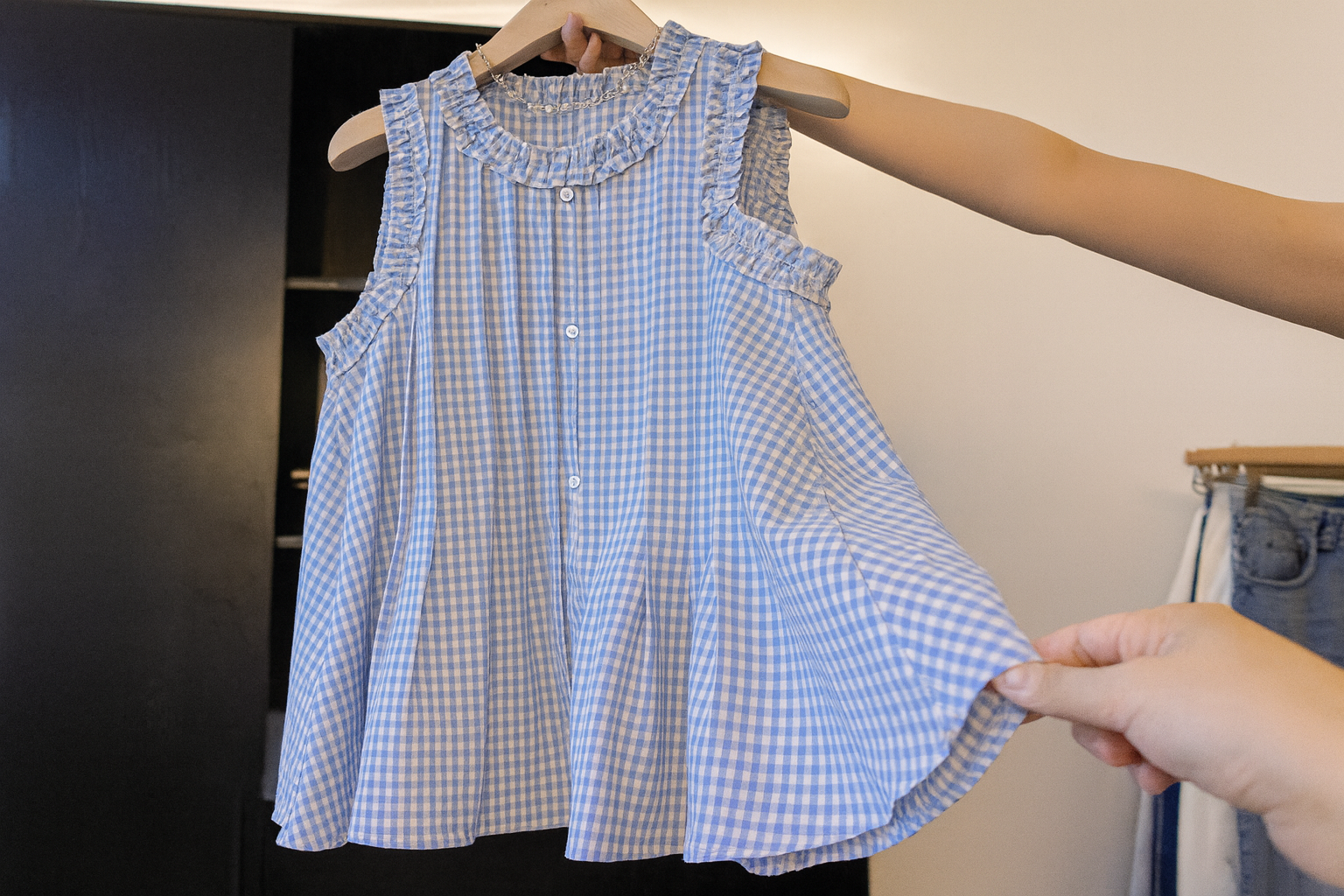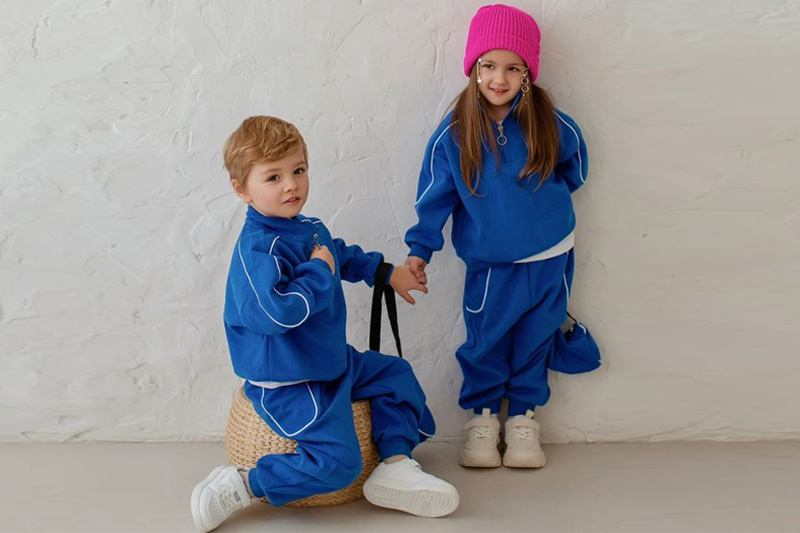There’s one fabric I keep coming back to when it comes to kids’ clothes—bamboo fiber 4×2 rib. It’s soft, stretchy, eco-friendly, and feels like a gentle hug on the skin. Whether you’re designing rompers, tees, or hoodies, this fabric just works—for the kids and the parents buying them.
Bamboo fiber 4×2 rib fabric is a top choice for kids’ clothing due to its exceptional softness, breathability, and eco-friendliness. The 4×2 rib knit adds extra stretch and recovery, making it ideal for active children who need freedom to move. It’s gentle on sensitive skin, naturally moisture-wicking, and holds up well through washes. For brands seeking comfort and sustainability, this fabric offers the perfect balance.
If you’re on the hunt for a fabric that feels good, performs well, and sells easily, bamboo 4×2 rib might just be your new go-to.
What makes bamboo fiber 4×2 rib fabric ideal for kids’ clothing?
Soft like clouds. Breathable like linen. Stretchy like a favorite tee. That’s the magic combo this fabric offers.
Sub-heading Snippet paragraph...
Bamboo 4×2 rib fabric is ideal for kids’ wear because it combines ultra-soft texture with flexible stretch and excellent breathability. It’s naturally hypoallergenic and thermoregulating—keeping kids cool in summer and warm in winter—making it suitable for everyday basics and sleepwear alike.
Why kids actually wear it (and parents keep buying it)
I once spoke to a mom who told me her toddler refused to wear anything else after trying on a bamboo rib tee. “He calls it his soft shirt,” she said, laughing. “If it’s in the laundry, we have a crisis.” That’s the kind of customer loyalty we dream of.
The beauty of this fabric comes from bamboo itself—an incredibly soft natural fiber with a silky feel. But the 4×2 rib knit is what gives it that signature texture and performance. It stretches just enough, then snaps back into shape without sagging. It’s like activewear disguised as loungewear.
Here’s why it checks all the boxes:
- Super soft: Great for newborns or kids with sensitive skin.
- Stretchy: Ideal for wriggly toddlers or active school kids.
- Breathable: Helps regulate temperature naturally.
- Anti-bacterial: Bamboo has natural odor-resisting properties.
- Eco-conscious: Bamboo grows fast and requires less water than cotton.
From onesies and bodysuits to leggings and tees, it’s one of those rare fabrics that works across the board.
How does the 4×2 rib structure enhance stretch and comfort?
It’s not just the material—it’s the structure that matters. 4×2 rib isn’t just a name, it’s a game-changer.
Sub-heading Snippet paragraph...
The 4×2 rib structure refers to four knit stitches followed by two purl stitches, creating a textured, elastic fabric. This design adds two-way stretch and allows the fabric to mold gently to the body without restricting movement. It’s especially ideal for fitted kidswear, like cuffs, collars, and stretchy garments.
Let’s unpack what makes 4×2 rib magic
Unlike flat knits, rib structures naturally stretch—without needing synthetic fibers. The 4×2 knit is a sweet spot: not too tight, not too loose. The result? A fabric that moves with the child, not against them.
Here’s what the structure looks like:
| Rib Type | Stretch | Common Uses |
|---|---|---|
| 1×1 Rib | Moderate | Cuffs, waistbands |
| 2×2 Rib | Soft + Stretchy | Beanies, sleeves |
| 4×2 Rib | Balanced | Bodysuits, tees, lounge sets |
| 6×3 Rib | Loose | Layering pieces, tanks |
Because of the wider knit segments, 4×2 rib gives a smooth yet dimensional texture that feels plush and holds its shape better than single ribs. It hugs the body, but not in a clingy way—which is perfect for babies and growing kids.
And here's the secret bonus: it hides wrinkles. A big win for parents who hate ironing.
Why is bamboo fabric a sustainable and eco-friendly choice for modern brands?
In today’s market, sustainability isn’t optional—it’s expected. And bamboo is leading the charge for eco-friendly fabric solutions.
Sub-heading Snippet paragraph...
Bamboo fabric is eco-friendly because bamboo grows quickly, requires little water, and doesn’t need pesticides. When processed responsibly, it has a lower environmental impact than conventional cotton. For brands targeting sustainability-conscious parents, bamboo fiber offers a guilt-free, renewable option.
Green never felt so soft
Bamboo grows up to 1 meter per day. That’s not a typo—it’s one of the fastest-growing plants on Earth. It regenerates from its own root system, meaning it doesn’t need replanting after harvest. This saves labor, water, and resources—and reduces the carbon footprint.
Here’s a quick side-by-side:
| Feature | Bamboo Fiber | Conventional Cotton |
|---|---|---|
| Water usage | Very low | High |
| Pesticides needed | None | Often heavy use |
| Growth speed | Extremely fast | Moderate |
| Biodegradable | Yes | Yes |
| Softness | Silky, luxurious | Varies |
Of course, not all bamboo fabrics are created equal. Look for closed-loop processing or certified suppliers when sourcing bamboo textiles to ensure eco integrity.
For your brand, promoting the use of bamboo isn’t just good for the planet—it’s also a great story to tell. It resonates with today’s parents, who care about where their kids’ clothes come from.
How does bamboo 4×2 rib compare to cotton rib in terms of softness and breathability?
Everyone loves cotton—but bamboo may just be its more sensitive cousin.
Sub-heading Snippet paragraph...
Bamboo 4×2 rib is softer and more breathable than traditional cotton rib. It has a smoother, cooler feel against the skin and naturally wicks away moisture. While cotton rib can feel thicker and rougher over time, bamboo maintains its softness even after repeated washing.
Cotton vs. Bamboo: The softness showdown
Imagine your favorite old t-shirt. Now imagine it made from bamboo instead. That’s the difference most people feel when switching from cotton rib to bamboo rib.
Here’s a comparison to help you visualize:
| Feature | Bamboo 4×2 Rib | Cotton Rib |
|---|---|---|
| Softness | Very soft, silky | Depends on cotton type |
| Breathability | Excellent | Good |
| Odor resistance | Natural anti-bacterial | No |
| Moisture-wicking | Strong | Moderate |
| Heat regulation | Adapts to temperature | Absorbs heat |
Bamboo also has a slight sheen that gives it a more premium look, while cotton rib is more matte and casual. For high-end kidswear, this can be a subtle but impactful difference.
Parents love clothes that don’t make their kids sweat—and bamboo helps with that. Especially in warmer climates like Australia or southern Europe, breathability is a big selling point.
Is bamboo rib fabric durable enough for active wear and repeated washing?
With kids, durability isn’t optional—it’s essential. So how does bamboo rib hold up?
Sub-heading Snippet paragraph...
Bamboo 4×2 rib is surprisingly durable for such a soft fabric. Thanks to the rib structure, it resists pilling, retains its shape, and survives multiple wash cycles without losing stretch. For active kids and frequent laundry days, it offers a good balance between comfort and longevity.
Don’t let the softness fool you
You’d think something this soft would be fragile—but bamboo rib is built tough. I’ve had samples that went through 20+ wash cycles and still looked fresh (minus a little fading, which is normal).
Here’s why it performs well:
- Rib knit structure absorbs movement and resists tearing.
- Bamboo fibers are naturally strong and flexible.
- Retains color better when washed cold and dried flat.
To extend life, I always recommend care labels with:
- Cold wash
- Mild detergent
- No tumble dry (or low heat only)
And for brands working with overseas manufacturers like Taian Lianchuang Textile Co., Ltd, it’s worth running fabric durability tests upfront—especially for large-volume orders. Better safe than refunding later.
Conclusion
Bamboo fiber 4×2 rib is more than just a soft fabric—it’s a smart choice for modern kidswear brands. It brings together comfort, stretch, eco-consciousness, and durability in one beautiful package.



